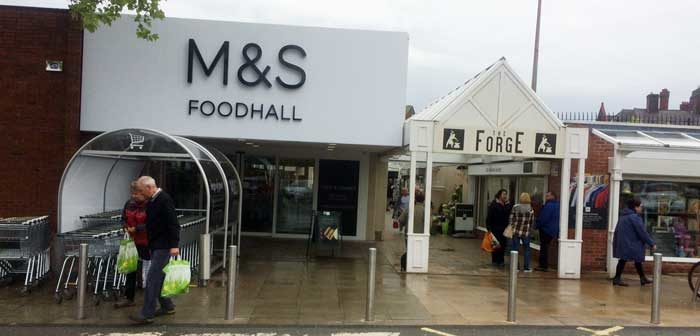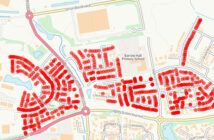SMALL is beautiful when it comes to the vitality of a shopping centre…well almost.
Retail specialist Harper Dennis Hobbs has ranked 1,000 retail centres across Britain after researching the quality of their retail offer.
In Cheshire their study has shown that Stockton Heath, ranked at 237, beats Warrington, ranked at 405.
Knutsford, ranked at 108, beats Macclesfield, 680, Altrincham, 554 and Northwich, 439.
Leaving aside major cities like Manchester and Liverpool, or specialist retail centres like the Trafford Centre, only Chester, ranked at 43, beats the small towns and villages.
Harper Dennis Hobbs don’t rate places like Lymm, Culcheth or Frodsham as being big enough to include in their “Vitality Index.”
The index ranks all retail centres in Britain by quantifying the “retail health” of each centre.
Vitality is measured through: The proportion of up-market shops, the proportion of value-led shops, the vacancy rate and the proportion of “undesirable” shops – such as pawnbrokers, money lenders and bookmakers.
In addition, these variables are also compared to the demographic composition of the centre’s catchment area and a greater score is given to areas whose retail mix is optimally adapted to the local community.
Jonathan De Mello, head of retail consultancy at Harper Dennis Hobbs, said, “This iteration builds considerably on our inaugural Vitality Index, released in 2014, which was the first retail ranking in Great Britain to emphasise the quality of retail in a centre, in addition to its size.
“In this release, by popular demand from both retailers and investors, HDH have incorporated additional small towns and high streets, which gives a greater range to the ranking, and allows for comparison of local high streets with major retail destinations. We’ve also included a number of temporal variables – tracking the change in retail mix of a centre over the past 5 years, to credit those that have improved, and penalise those that have deteriorated.
“This ranking highlights the ‘healthiest’ retail centres in Britain, which successful brands should target when considering network expansion. Smaller centres are of increasing interest to retailers, given rents are often highest in the largest centres. So a small centre with a high vitality score – and the right shopper profile – could potentially yield strong profit.”
James Ebel, executive director in Harper Dennis Hobbs’ retail agency division, said: “With an increase in online retailing, many of our clients, especially those from North America, now want to consider why they should enter a market rather than how many stores they should have. For this purpose, it’s important to know not only who trades in a retail centre, but how many are vacant and whether the market captures their customer profile.
“Each retailer has different requirements in terms of what makes an ideal location to trade in. This ranking, with some bespoke criteria included, can be an important tool for retailers looking to expand their store portfolio. The Vitality Index highlights some of the highest quality retail centres in Britain, demonstrating the fact that market size isn’t the only predictor for commercial success.”
Which UK centre comes top of the league? They will be green with envy in Oxford – because it’s Cambridge.
Small is beautiful when it comes to retail “vitality”
11 Comments
Share.





1 Comment
It’s nothing to do with the size of a retail centre at all. It’s all about the average take home salary, full employment levels locally plus the disposable income of wealthier residents: Haves vs Have Nots. You do not need a survey to tell you that Britain has been divided into rich and poor enclaves, and the gap is widening.